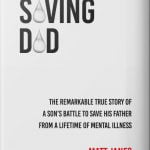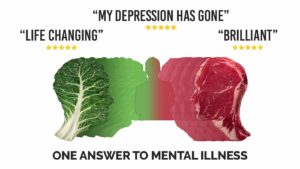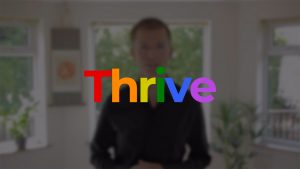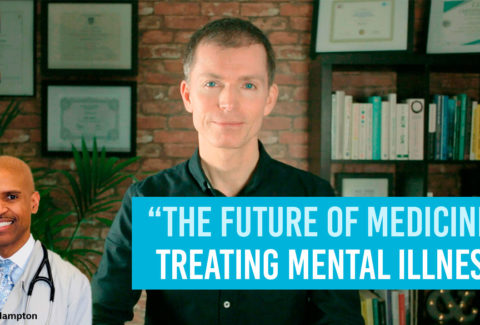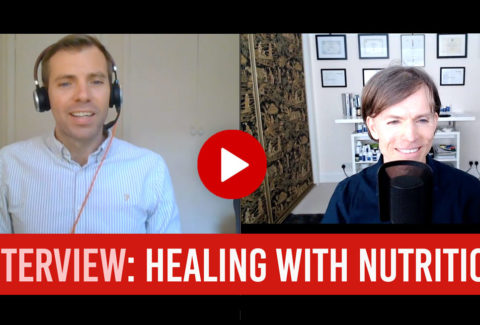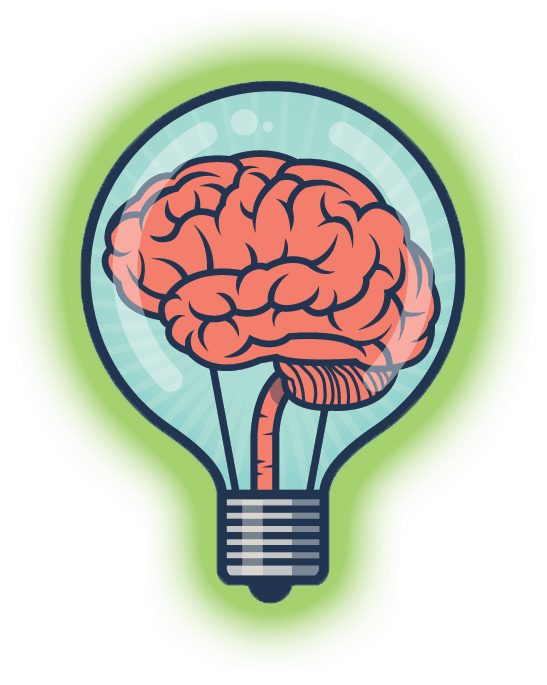4 Steps to Mental Health
May 8, 2020 2021-07-25 10:434 Steps to Mental Health
4 Steps to Mental Health
In 2008, when I was suffering from my worst ever period of depression, I lay in bed, unable to function. I couldn’t sleep, I’d lost a stone in weight, my memory was shot, I couldn’t make decisions and I was afraid of going outside. I thought that I had no future.
The road back to full mental health has taken many years and lots of hard work. Over the last twelve years, I’ve completely reengineered my life. From my relationships and my work, to my beliefs and my diet, everything has changed.
It hasn’t been a straight road. There have been lots of twists and turns, bumps and mistakes along the way. Whilst I wouldn’t smooth out the difficulties, they have been necessary for me to grow, it would have been comforting to have someone guide me along the way, especially at the beginning. So that’s what I’m here for, in this article and in the others on the site. Hopefully, for you, I can make the journey a little smoother, and a little quicker.
To begin that process, I’m going to share with you the 4 steps to mental health. Consider them a framework, foundation, or roadmap for how you can transform your mental wellbeing. This is designed to be a helpful overview, so that you know where to begin and what steps to take. To master them, you’ll need to go deeper, using the other resources here. And then practice what you’ve learned. Let’s begin…
Step 1: Gain mastery over your emotions
There are many events in your life over which you have no control. Some things will go differently to the way you expected or wanted them to. What you do have control over, is how you respond. Whilst in no way do I believe that emotions can be reduced to mathematics, there is an equation which demonstrates my point very simply:
Suffering = Pain x Your Response
An example of this would be; It’s a lovely sunny day and I’m enjoying a drive with my wife, Pauline, along a beautiful, winding country road. Out of nowhere, a middle aged man in his BMW flies up behind me, overtakes at high speed, and only just makes it back onto the ‘correct’ side of the road, before a van passes us in the opposite direction. It’s a close shave.
The previous version of me would have sworn some choice expletives, flashed my headlights, held my hand on the horn for a good 5 seconds, before ruminating about the event for the next 10 miles. And the only people who would have suffered as a result of my emotional outburst would have been Pauline and me. What, before the event, was a peaceful drive in the countryside, would have been ruined by my emotional response to the event.
These responses happen every day. Not necessarily to an incident on the road, but to an email you’ve received, to something someone has said to you, to the dirty dishes being piled up yet again, to the dog barking or to the kids playing up. With all the will in the world, we can’t change life’s events, but we can change how we respond to them, so that we endure less suffering. The wiser me, at least most of the time, is able to let reckless drivers overtake, without me losing my cool. And I don’t get annoyed if the dishwasher needs emptying for the third time in 12 hours. I simply empty it.
You needn’t become a monk to live this way, instead you need to learn how to gain mastery over your emotions. It’s a process that begins with self-awareness. If you’re unaware of your thoughts, emotions and behaviour, you can’t gain control over them. Wittingly, or unwittingly, you are training your brain to have an emotional response to the events in your life.
Neurons that fire together, wire together
Think of a skier who is gliding down a mountain run. He or she can choose whatever path they like, through the untouched snow. However, if another skier soon follows them and their skis start down the same route as the first skier, they will naturally follow the same path. In neuroscience, this phenomenon is known as neuroplasticity; neurons that fire together, wire together. Or in layman’s terms, you become what you practice. Your brain is made up of circuits of neurons, which communicate with each other. Like tracing an established path in the snow, neurons that regularly communicate with each other form familiar networks. Signals pass down these circuits more readily when they are practiced at doing so.
This is why you can train the emotional life of your brain. If you regularly respond to emails, your dog or your kids with frustration or anger, this will become your default response. The good news is that you can change how you respond. That’s what neuroplasticity is all about. It used to be thought that our brains were hard wired, but since 1966, we’ve known that the brain can adapt.
So how does gaining mastery over our emotional life affect our mental health?
When we are at the mercy of our emotions, we extend the physiological reaction, or stress, throughout our brain and body. If I ruminate about the BMW driver after he’s passed me, I prolong the cascade of stress hormones which are already circulating around my body. Cortisol, our stress hormone, is designed to be around only for short periods of time. Extended periods of circulating cortisol creates inflammation on a systemic level, which can cause inflammatory depression.
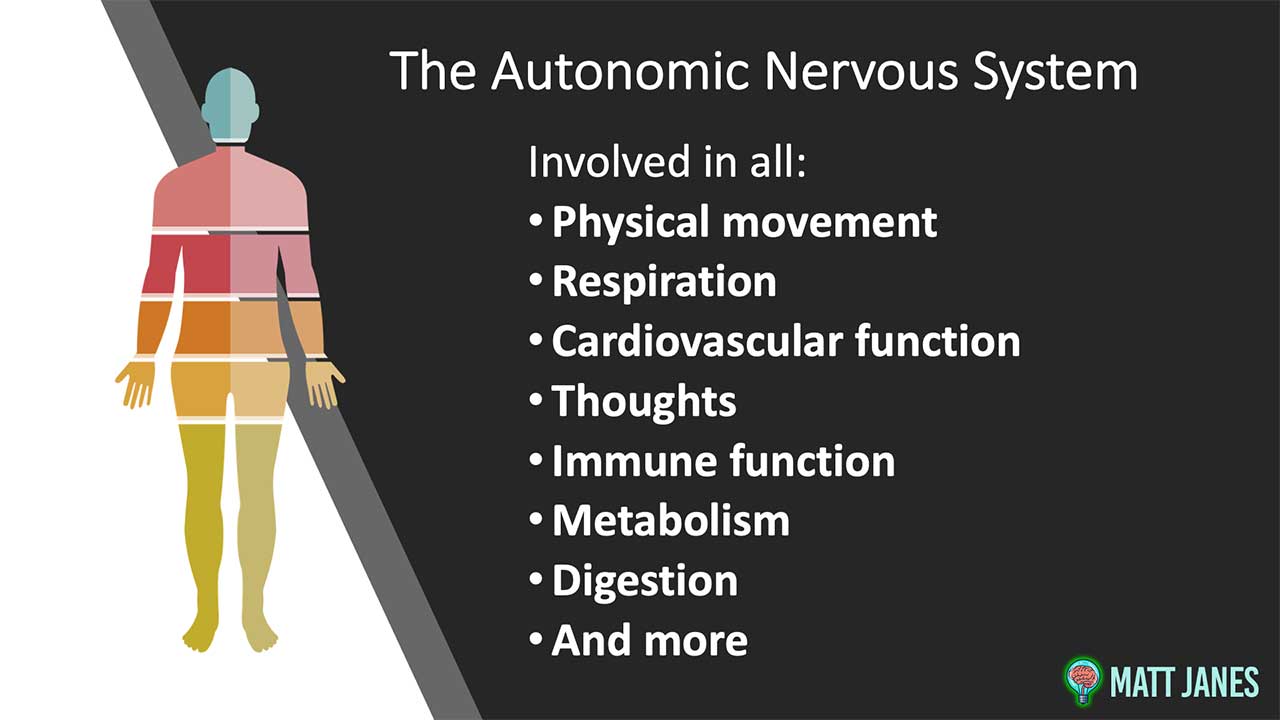
Something you’ll often hear me talk about is the autonomic nervous system. It’s a series of nerves, muscles and organs over which you have no conscious control. Running from your brain to your backside, it plays a critical role in your mental health. The secret to achieving great mental health is keeping this system in balance. Stressors, such as reckless drivers, knock us out of autonomic balance, which is why they pose a threat to our mental health, but the good news is that there are several ways to tune this system back into balance. Gaining mastery over our emotions is an important one. It allows us to calm our stress system and regain homeostasis, or balance, in our nervous system.
Gaining mastery over your emotions is a process which you can learn in Thrive, my online video course. Over a series of 38 video classes, you’ll gradually build the required knowledge to master the emotional life of your brain. These are skills that will stay with you for life and help you to navigate life’s stressors and become more resilient, rather than getting knocked off course by stress. You can watch the introductory class for free, here, and if you like what you see, sign up for the full course.
Thrive contains nearly 5 hours of video classes, plus downloadable class summaries, to help you to remember the most important points. You can take the classes as many times as you like, which will allow you to create a regular practice, to get your brain’s neurons communicating with each other. The first five classes in the course go into more detail about the neuroscience I’ve touched upon here, so that you can fully understand how Thrive works. Then, through a series of practical classes, you’ll learn the tools you need to gain mastery over your emotions and how to achieve exceptional mental health.
Step 2: Fuel your brain and body
This is huge.
It always make me chuckle when people are shocked to learn that food plays an absolutely critical role in their mental health. Think about it. Other than food, how can you fuel your brain and body? How can you generate energy, motivation, movement, hormones and neurotransmitters without fuel? If you’ve been unfortunate enough to put petrol in your diesel car, or vice versa, you’ll know the devastating effect of choosing the wrong fuel. Well, it’s the same for your brain and body.
I’ll let you into a secret. There isn’t one diet for everybody. That’s right, different people thrive on different diets. Sorry Dr. Atkins, sorry Mr Vegan, your latest cookbook telling everyone that they can get healthy with your one-size-fits-all approach is simply untrue. How do we know? Because of the pioneering work of Dr. Weston Price, who, during the 1930s, travelled to 5 different continents and over the course of 8 years, lived with 14 different tribes from 14 different countries. He documented 1000s of these traditional people, recording the fact that where in the world they lived, and what foods were available to them naturally, determined what they ate.
It should really come as no surprise that the Eskimos of Alaska ate an all animal diet and no vegetables, since whales and seals were abundant, whilst vegetables weren’t able to grow in their harsh, northern environment. Their diet was in stark contrast to the Polynesians, who ate a coconut based diet, with lots of fermented coconut milk, yoghurt and cheese, plus some fish and boar meat. Whilst the Polynesians ate no grains, the diet of the Indians of the High Andes was rich in them. They ate a quinoa based diet, along with some fruits, some fish, plus milk, cheese and yoghurt from llamas, as well as some llama meat. Unlike modern diets, which are crippling us with chronic disease, on these traditional diets, Dr. Price discovered, people thrived.
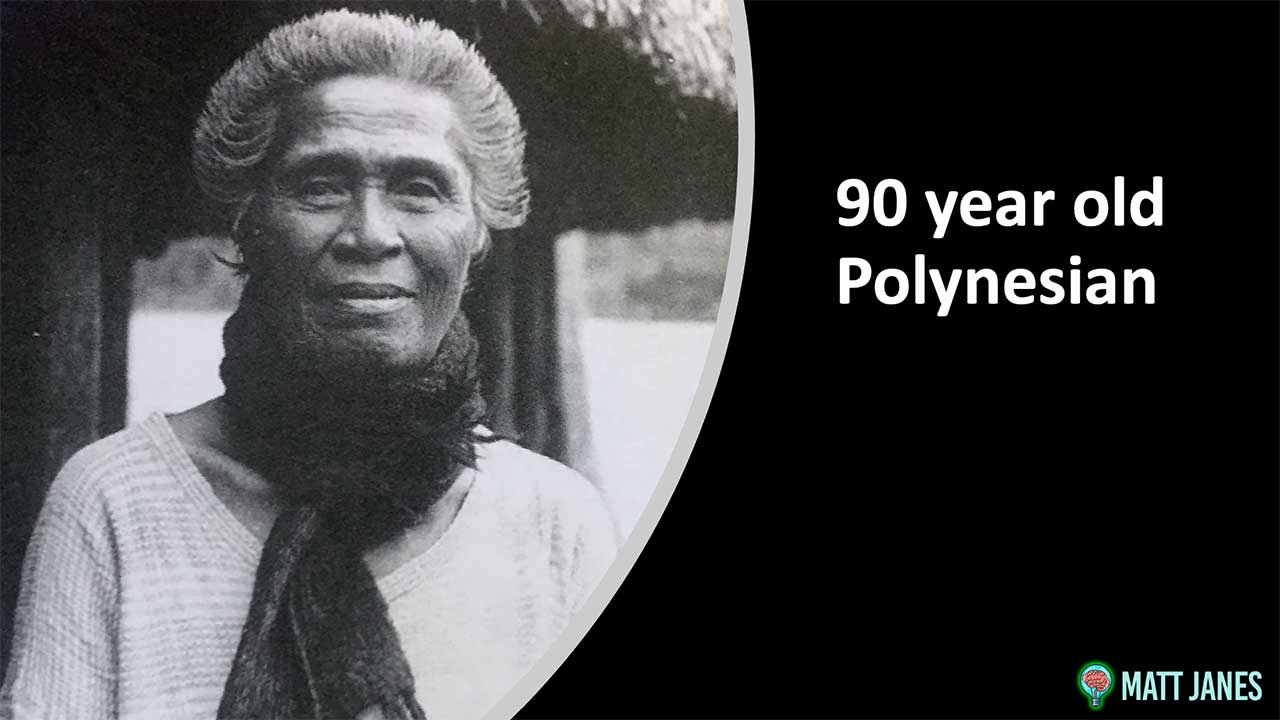
Photo credit: Nutrition and Physical Degeneration, Dr. Weston A. Price, Price-Pottenger
Whilst Dr. Weston Price didn’t know the science behind why people thrived when they ate their traditional diet, thanks to Drs. Francis Pottenger Sr. and Dr. Daniel Funkenstein, we now know that is is because different foods tune the autonomic nervous system in different directions. This nervous system contains two branches, the sympathetic and the parasympathetic. For the autonomic nervous system to be in homeostasis, and mental health to be achieved, these two branches must be in balance. Some people, with a genetically predisposed dominance in their parasympathetic branch need a totally different diet to those with a dominant sympathetic branch. Tailoring your diet to your autonomic group is vital to achieve exceptional mental health.
So this brings us back to why there isn’t just one diet for everyone. Because everybody has a unique makeup, we need to tailor our diet to fuel ourselves with the specific nutrients that our individual biochemistry demands. Drs. Funkenstein and Gellhorn proved this is to be the case in the 1950s and 60s. They routinely brought about health in their mental health patients by balancing their autonomic nervous system, which Dr. Gellhorn referred to as ‘reflex tuning’.
This approach isn’t limited to mental health. Dr. William Kelley and Dr. Nicholas Gonzalez successfully treated thousands of cancer patients using this approach. They used reflex tuning as one element of a three-tier protocol, with remarkable results. The average survival rate for Stage IV pancreatic cancer is 3 to 6 months, yet Arlene Van Straten, after being diagnosed with this very same disease at the Mayo Clinic in 1981, followed Dr. Kelley’s protocol and lived a further 35 years, dying in 2017 at the age of 81.
If you want to start your healing journey, enrol in my online program, One Answer to Mental Illness. Many people have already resolved their mental illness using my nutritional approach, including Scott, who said, “I took Matt’s program, then 5 days after changing my diet, my depression began to lift. After 10 days, I felt like a different person, full of energy and hope. I’m in no doubt that One Answer to Mental Illness represents a genuine alternative to psychiatric medication.”
Here’s what Don Ste Marie says about my program, “Brilliant, A Game Changer. I am confident that this course will help thousands that may be struggling with their mental health. It will also help countless others optimize their general health. This course is a tour de force with respect to understanding the relationship between what we ingest and how we feel and behave. Matt does a tremendous job in providing the history and science on a subject that most of us know little about. I don’t think I have learned so much on a topic in 4 hours in my life. I highly recommend this course. Thank you Matt, for your research, energy, and passion.”
Then, Annic Scholer Musfeld says, “A Milestone in the History of Mental Health. ‘One Answer to Mental Illness’ is simply incredible. I am impressed how clearly Matt leads you through a highly complex topic like the nervous system, how he explains what happens with you when the sympathetic or parasympathetic strand dominates, and how you can get back into balance using the right diet and supplements. If you are struggling with mental health problems and looking for a solution away from classical medicine, then try this program, I highly recommend it. Thanks Matt.”
Enrol here – One Answer to Mental Illness
Step 3: Develop a meaningful purpose in life
In preparation for writing my memoir, Saving Dad, I spent a significant amount of time researching how to tell a story. Something that helped me enormously in its writing was the discovery of the fundamental question that needs answering when storytelling:
Who am I?
Some books and films get bogged down in the plot, without ever answering this critical question. This leaves the reader or viewer unsatiated. How enjoyable would Star Wars have been if you hadn’t discovered Luke’s true purpose in life as a Jedi, capable of defeating the Empire?
The insight of what drives good storytelling has huge significance for how we can live our lives with more meaning and contentment. Most of us spend our lives concerned with what we do, not who we are. But we are human beings, not human doings. By answering the question, ‘Who am I?’ or perhaps, ‘Who do I want to become?’, we can establish a framework for how to live our lives with purpose.
Before we can meaningfully answer the question of ‘who am I?’, we need to know ourselves. This sounds obvious, but most people don’t spend a lot of time thinking about who they are. Inner work is a critical aspect of getting to know who you really are and what’s important to you. Only by practicing inner work will you be able to identify your true calling. I use the word, ‘practicing’, deliberately. The journey of discovery is achieved through practice. It doesn’t arrive cognitively, rather experientially. This means that you must spend time, fully present, in your own company. With your thoughts, your sensations, your emotions and beliefs. Then your true self will reveal itself.

Over the last five years, I’ve been through this journey myself. I didn’t used to know who I was. I thought I did, in fact I thought I knew exactly what I wanted out of life. But I was mistaken, because I hadn’t spend any time in contemplative practice. Instead, I was always rushing around, going about my daily routine, never with enough time to get everything done, before collapsing into bed. Days turned into weeks, which turned into years, without me truly examining where I was heading. Unsurprisingly, I didn’t end up where I wanted to be.
Thankfully, my body knew better than my conscious mind. So it stopped me in my tracks. I didn’t thank it at the time, since the depression that followed was truly awful, but this period of my life was my stumbling stone, the threshold I had to cross for me to enter the second half of my life. It was then that I could identify my true purpose in life. And then live into it.
That’s how all of my subsequent work came about. My deep studies into neuroscience and nutrition, the writing of my book and creation of my online course, plus the autonomic testing and nutritional advice I provide to those wanting to transform their mental health.
If you’re ready to start your own journey of discovery into who you really are, it’s time for you to enrol in Thrive, my online video course. I’ll guide you through the necessary steps on the path to enlightenment. To get started, click here.
Step 4: Live in community
When Mother Teresa said, “The most terrible poverty is loneliness”, she was acknowledging that human beings evolved to live in community with others.
Modern life has stripped away a lot of our community. Families living apart from each other (there are 7 million single person households in the UK), grandparents packed off to nursing homes, skyrocketing divorce rates, the collapse of organised religion, the crumbling of our local communities, the rise of the self and the ego, fake Instagram lives. Our evolutionary ancestors needed each other to survive, on a practical, daily basis. For most of human history, becoming separated from others put us at imminent risk of starvation or attack. Today, the perception is that there is no safety in numbers. The ease with which we can source food and run our daily lives means that we can quite easily function alone.
But isolation is a death sentence. The evidence is overwhelming:
- James House, from the University of Michigan, conducted research into the health of an entire town. After adjusting for age and other risk factors, adults who had fewer social relationships were twice as likely to die over the next decade. Their lack of social bonds was prematurely killing them.
- In another study, The Tecumseh project concluded that social isolation is as dangerous for health as obesity, inactivity and smoking. The evidence from this project was as strong as the landmark 1964 US government report that officially linked smoking with lung cancer.
- Furthermore, in 2010, US researchers analysed 148 studies involving 308,000 people and concluded that lack of social bonds doubles the risk of death, from all causes.
When we’re socially rejected or isolated, we don’t just feel sad, we feel injured and under threat. Stress researchers have found that our bodies respond to being rejected in the same way as we respond to imminent physical harm. Lonely people have higher baseline levels of stress hormones (cortisol and adrenaline) and as well as inflammation. Inflammation is the basis of all chronic disease, like arthritis, Alzheimer’s, Parkinson’s and inflammatory depression, plus it shortens our telomeres, the caps at the end of our DNA. This literally shortens our lives.
The impact of loneliness depends not on how many contacts we have, but how lonely we feel. Lonely people rate social interactions more negatively, are less trusting of others and judge them more harshly. The reverse is true of connected people and the difference between the two is how isolated they feel. So loneliness affects psychological state, physical wellness and gene expression.
Scientists used to think that epigenetic tags were set in the embryo and fixed for life. But we now understand that they can be altered by our experiences, practices and environment. We don’t inherit from our parents a single ‘biological self’. Instead, our genomes encode a wide variety of potential selves and our social environment, including our perception of that environment, helping to determine which of those selves we become.
Gene Brody, from the University of Georgia, investigated what makes kids resilient. Why do some go off the rails and some stay strong in a tough environment? Resilient kids were brought up by firm, vigilant parents, but crucially they were affectionate, communicative and highly engaged in their children’s lives. And this effect lasts. Children who are nurtured in this way have lower inflammation in their cells years later.
I’ll be writing more about community, and how to achieve it, in future articles, but in the meantime, I’ll leave you with this beautiful TED Talk, in which Robert Waldinger, Director of the Harvard Study of Adult Development, reveals the results of their 75 year study into what makes a good life. I highly recommend that you watch it. It’s fascinating.
I hope that you’ve enjoyed reading this article. Congratulations on getting all the way to the end!
Best wishes,
Matt



